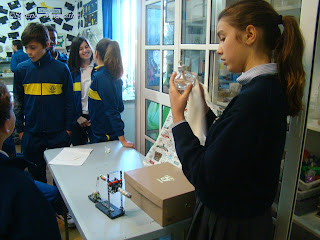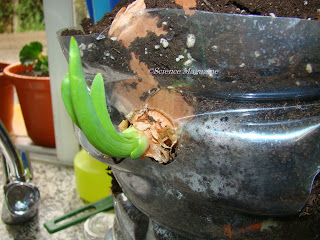Laura's topic for the Science Fair was about the Stirling Engine. She made a stirling engine using a syringe, test tube, rubber (balloons) and marbles. The stirling engine was invented by Robert Stirling in 1790. Basically this engine converts heat energy into mechanical energy. The air in the syringe is heated by an external heat source e.g. Bunsen burner. When the air heats up it expands and the pressure in the syringe makes it go up, moving the marbles. Now most of the air is in the cold side and it contracts, the syringe goes down pushing the marbles again. If the engine is perfectly balanced the movement is constant. The movement stops by removing the heat source. This is an easy and safe way to produce movement and it doesn't pollute. Although it aslo has a few disadvantages, the need of always having to have an external energy source and the fact that it doesn't produce a very fast movement.
For the science class it's an excellent way to illustrate an energy conversion, how heat can be changed into movement! Laura did a great job with this topic, specially considering she had to make a last minute experiment change!
This is Laura showing the class her experiment and practicing for the Science Fair.




























